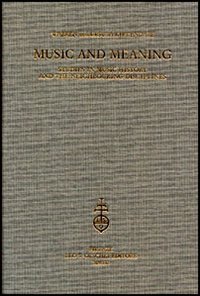 Kirkendale,Warren e Ursula.
Music and Meaning. Studies in music history and the neighbouring disciplines.
Kirkendale,Warren e Ursula.
Music and Meaning. Studies in music history and the neighbouring disciplines.
Firenze, Olschki Ed.
2007,
cm.17x24,
pp.XII-646, es.mus.nt. 46 tavv. bn.e 4 a col.ft.
legatura ed.
Coll.Historiae Musicae Cultores,113.
An indexed selection of revised and updated articles, seven of which hitherto unavailable in English, dealing with music and rhetoric, Josquin, Marenzio, Vecchi, Cavalieri, Rasi, Lully, Caldara, Handel, Bach (Musical Offering), Mozart, Beethoven, Paganini et al. Largely source-based, utilizing archival documents (for Handel) or applying the methods of literary topos-research and iconology to music itself, with links to the disciplines of history, Classical and Romance philology, art history, liturgics, patristics, etc.
Una scelta aggiornata di articoli con indici, sette dei quali non ancora disponibili in inglese, su la retorica musicale, Josquin, Marenzio, Vecchi, Cavalieri, Rasi, Lully, Caldara, Handel, Bach (Offerta Musicale), Mozart, Beethoven, Paganini et al. Applica i metodi delle ricerche sui topoi letterari e dell'iconologia alla musica stessa, con collegamenti a storia, filologia classica e romanza, storia dell'arte, liturgistica, patristica, ecc.
EAN:
9788822256591
Nuovo